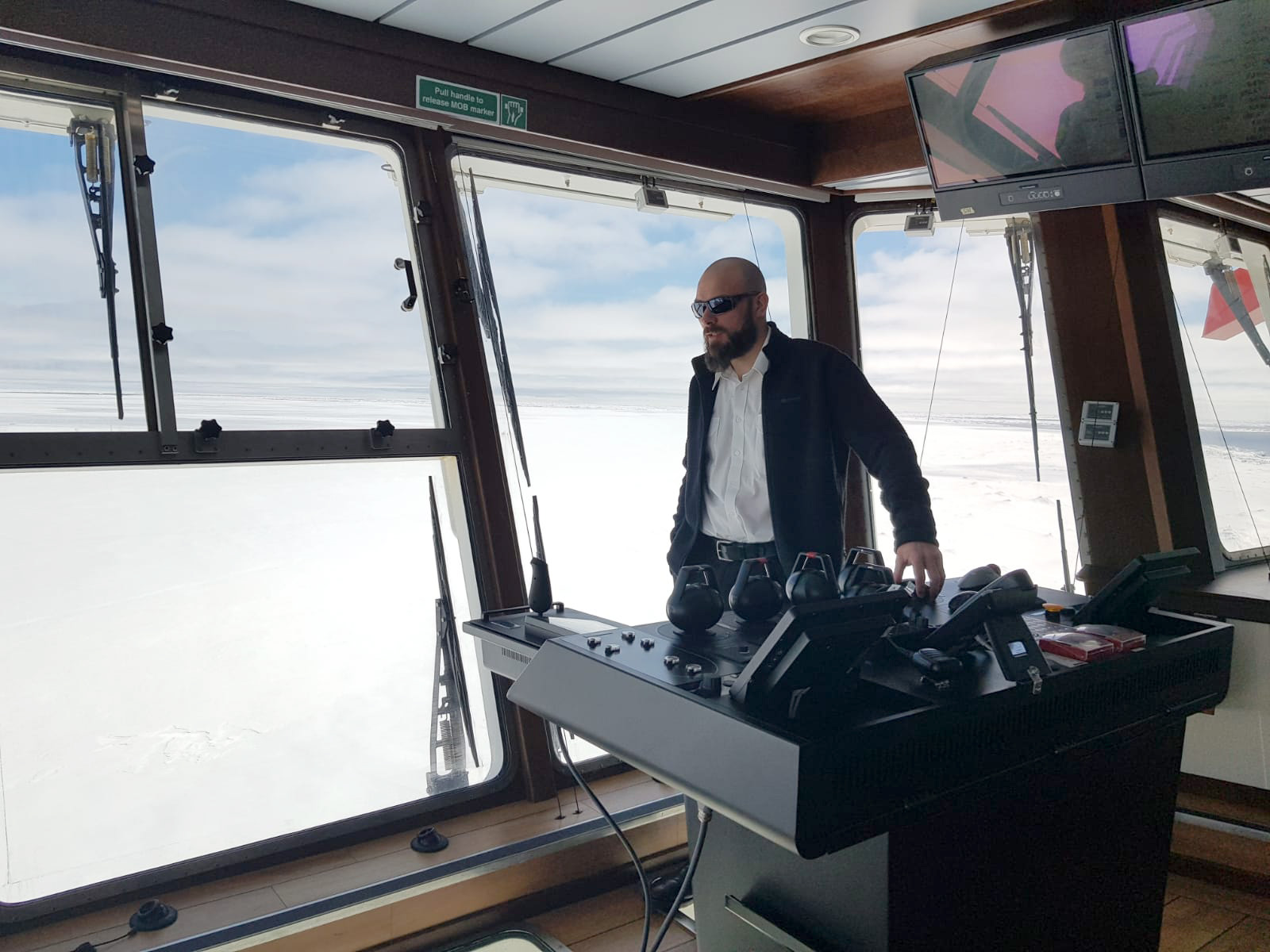Entry 5 Day 32 13 November 2024 51°56'31.2''S, 58°22'48''W Travelled: 7957.56 Nautical miles
51°56'31.2''S, 58°22'48''W Travelled: 7957.56 Nautical miles
Ice, ice baby
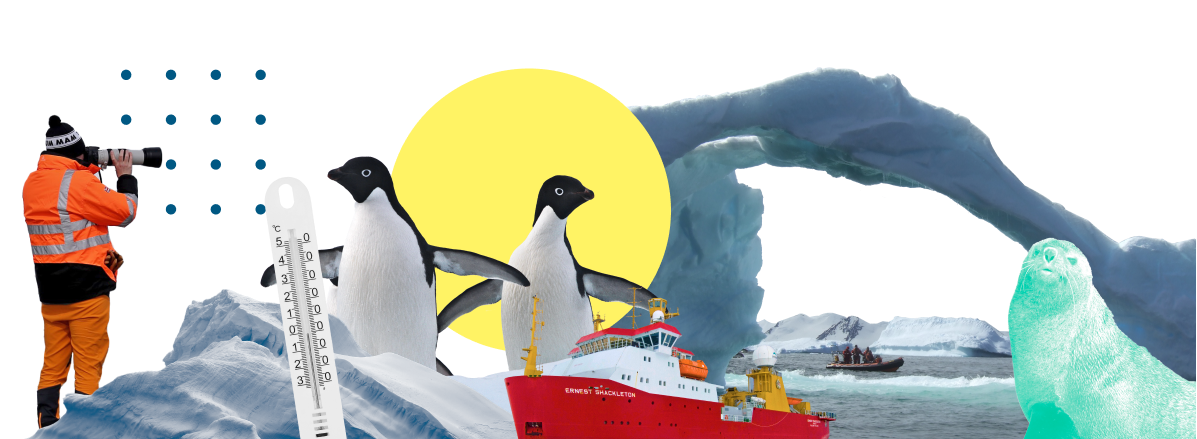
It’s finally happening – we’re about to enter the Southern Ocean! The RRS Sir David Attenborough has just docked in the Falkland Islands, our last stop before we get to Antarctica.
We departed Harwich in the UK exactly one month ago!
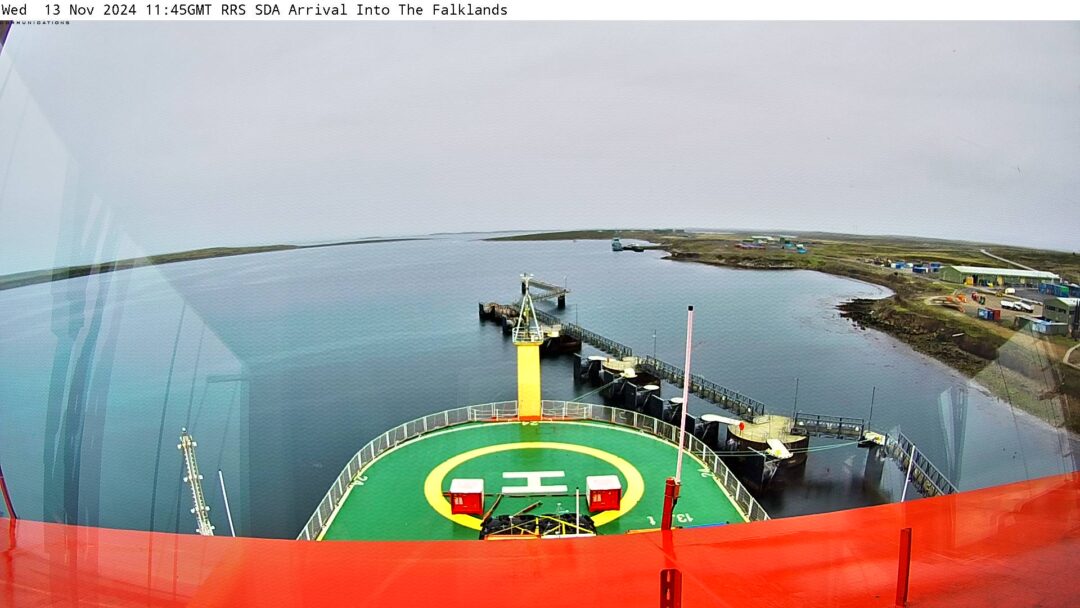
Just docked in the Falkland Islands, where the ship is registered
We’re about to cross the Drake Passage – an area of ocean between the tip of Chile in South America and the South Shetland Islands near Antarctica.

Drake Passage
The Drake Passage was formed around 34 million years ago, when Antarctica and South America drifted apart. It’s incredibly deep – up to 4,800m!
The Drake Passage has a reputation for being a bit… choppy. In fact, waves can be up to 18m tall here! There are a few reasons for this.
The Southern Ocean encircles Antarctica; it’s the only ocean that can flow around the globe, uninterrupted by land. We call this current the ‘Antarctic Circumpolar Current’, because it circumnavigates the continent!
The Drake Passage is the narrowest part of this circle of ocean surrounding Antarctica, which is one of the reasons for the rough seas and its fearsome reputation.

The SDA sails through choppy waters
The Southern Ocean extends from the edge of the continent to the ‘polar front’, which separates it from the surrounding Pacific, Indian and South Atlantic Oceans.
This Antarctic Polar Front marks the location where there is a strong contrast in the temperature of the sea water: the Southern Ocean water is significantly colder than the waters of the surrounding oceans.
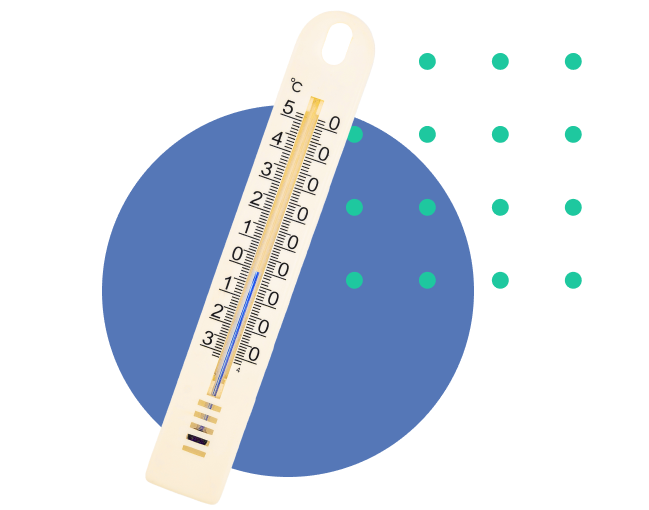
Brrrrrr
Near Antarctica, the water temperature can be -1.8°C, rising to around 3.5°C near the polar front.
It can also be extremely windy – winds can whip around the continent, again unimpeded by land. (The winds have been fondly nicknamed the ‘roaring 40s’, ‘furious 50s’ and ‘screaming 60s’).
After the challenging storms crossing the Drake Passage, there is often a period of strange calm. It’s a time when the ocean often appears flat, the water temperature quickly drops, and there can be a eerie silence and an almost haunting mist or fog. This is the convergence zone, or Polar Front – the boundary where we cross into the cold Southern Ocean.
Pete Bucktrout, photographer and videographer at BAS
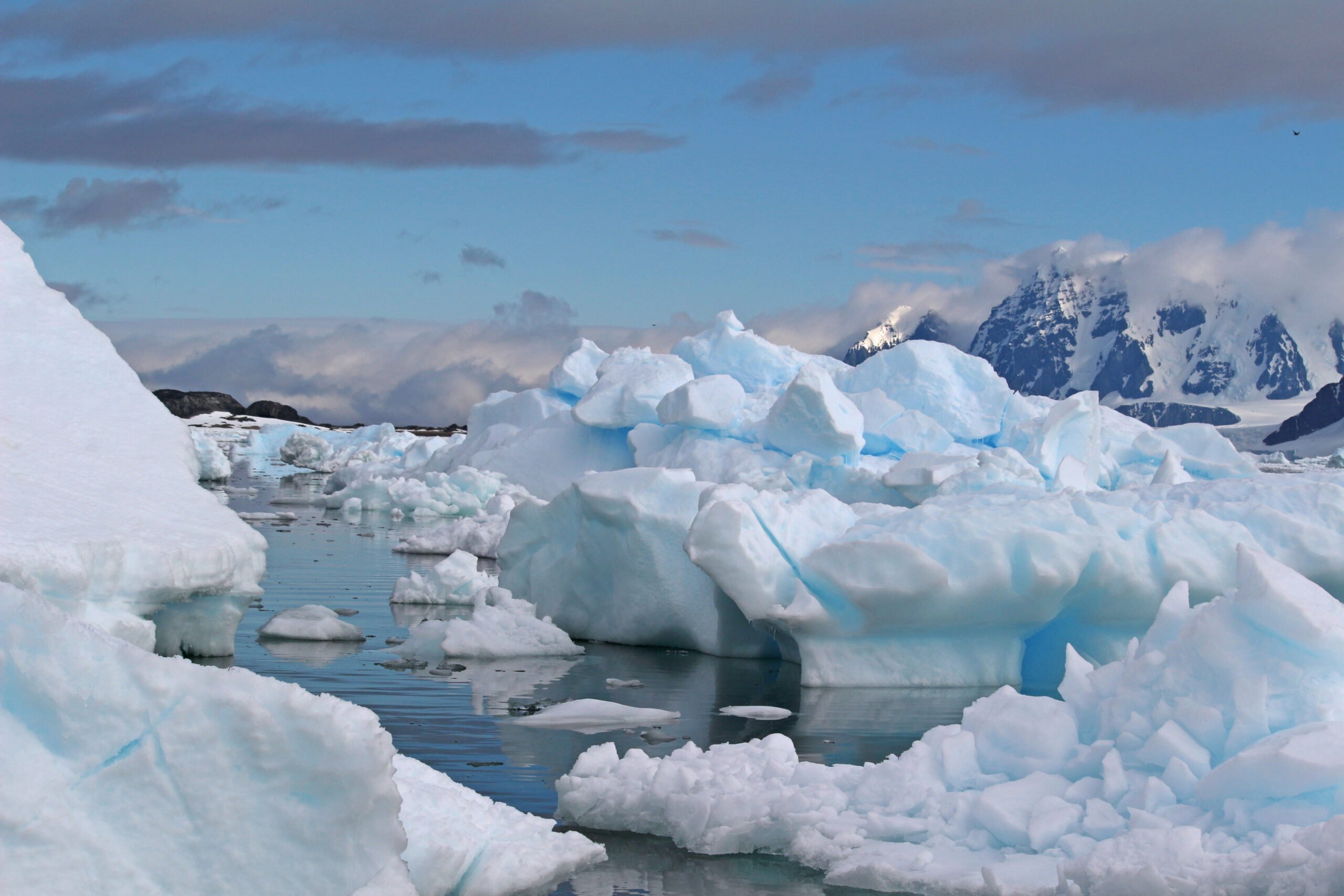
So many shades of blue!
Feeling a bit queasy?
How are your sea legs holding up? We’re about to reach the Southern Ocean and cross the notorious Drake Passage. As we said, it can get pretty rough so we need all the tips we can get to help us with sea sickness!
Some people are lucky, and never get sea sick – no matter how rough it gets. Others get sick with even just a little bit of motion. Some of our previous ships could be a bit bouncy in rough weather. But, because of its size and shape, most people find RRS Sir David Attenborough to be much more stable in rough weather.
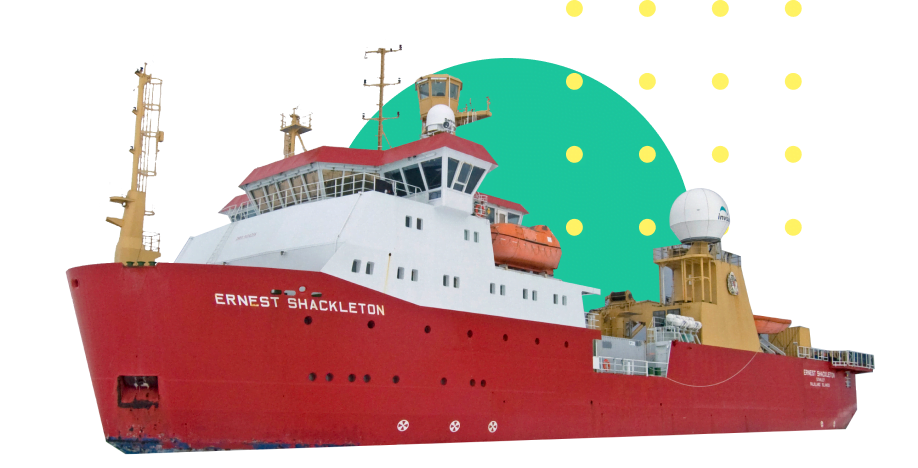
Rough seas
Our previous ship, the RRS Ernest Shackleton was fondly nicknamed ‘the vomit comet’!
Top tips for sea sickness?
We asked some of our seasoned crew members for their tried and tested tactics for dealing with rough conditions.
Watch the video – opens in new tab
Martin Rowe, Deck Bosun
“If you get seasick, take the tablets at least a day before the bad weather is expected. Looking at the horizon and getting fresh air helps too.”
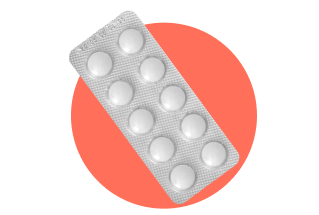
Theresa Gossman, Lab Manager
“I get extremely sea sick. The biggest tip I got was to eat a lot, because if you don’t eat you just get more sea sick. And look at the horizon!”
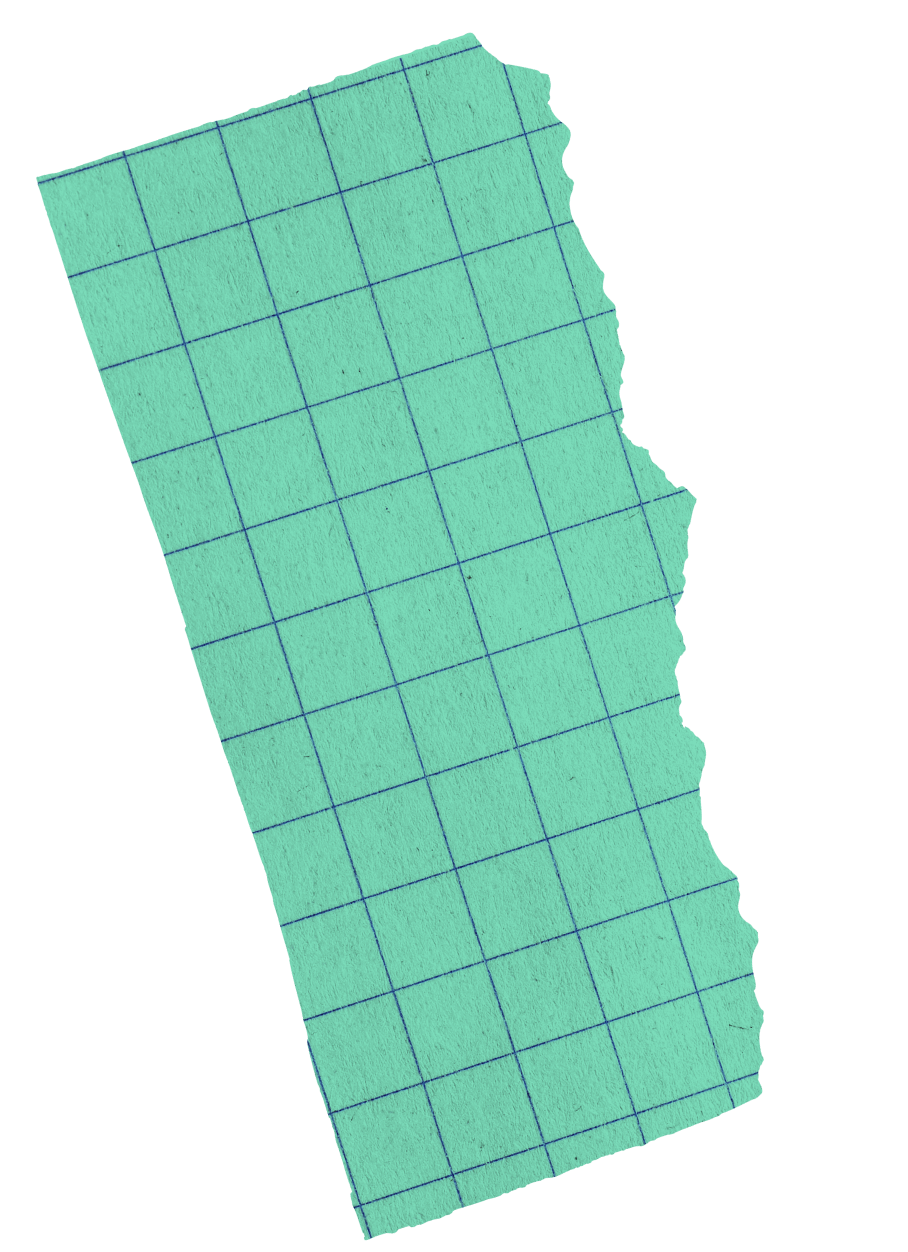

Rich Turner, Purser
“I’m lucky and don’t get sea sick. But the best plan is to keep hydrated and keep eating small meals.”

Neets Buttle, Deck Crew
“As soon as you feel sick, lie down and nibble on some crystallised ginger!”

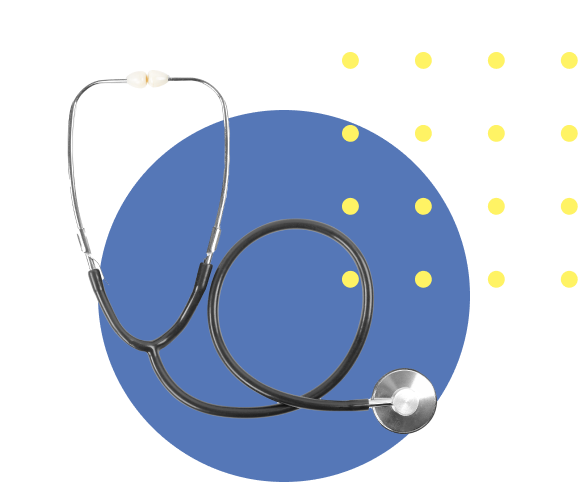
Did you know?
There is a Doctor and a small hospital on board the ship, in case anyone is unwell while they’re at sea.
One of the main things we have to look out for is icebergs.
Icebergs are large chunks of ice that break off from ice shelves – a process known as ‘calving’. Ice shelves are the part of a glacier that floats on the water when the glacier gets all the way down to the sea.
This means that the icebergs are made of freshwater, rather than salty sea water.
Perhaps the most important thing to know about icebergs, from a ship navigation point of view, is that most of the mass of an iceberg is below the water, where we can’t see it. This is where the phrase “the tip of the iceberg” comes from!
Bergy bits
Icebergs are called different things depending on how big they are! To be classed as an iceberg, the ice must be at least five metres high above the water.
Smaller chunks are called ‘bergy bits’, and even smaller ones are known as ‘growlers’.

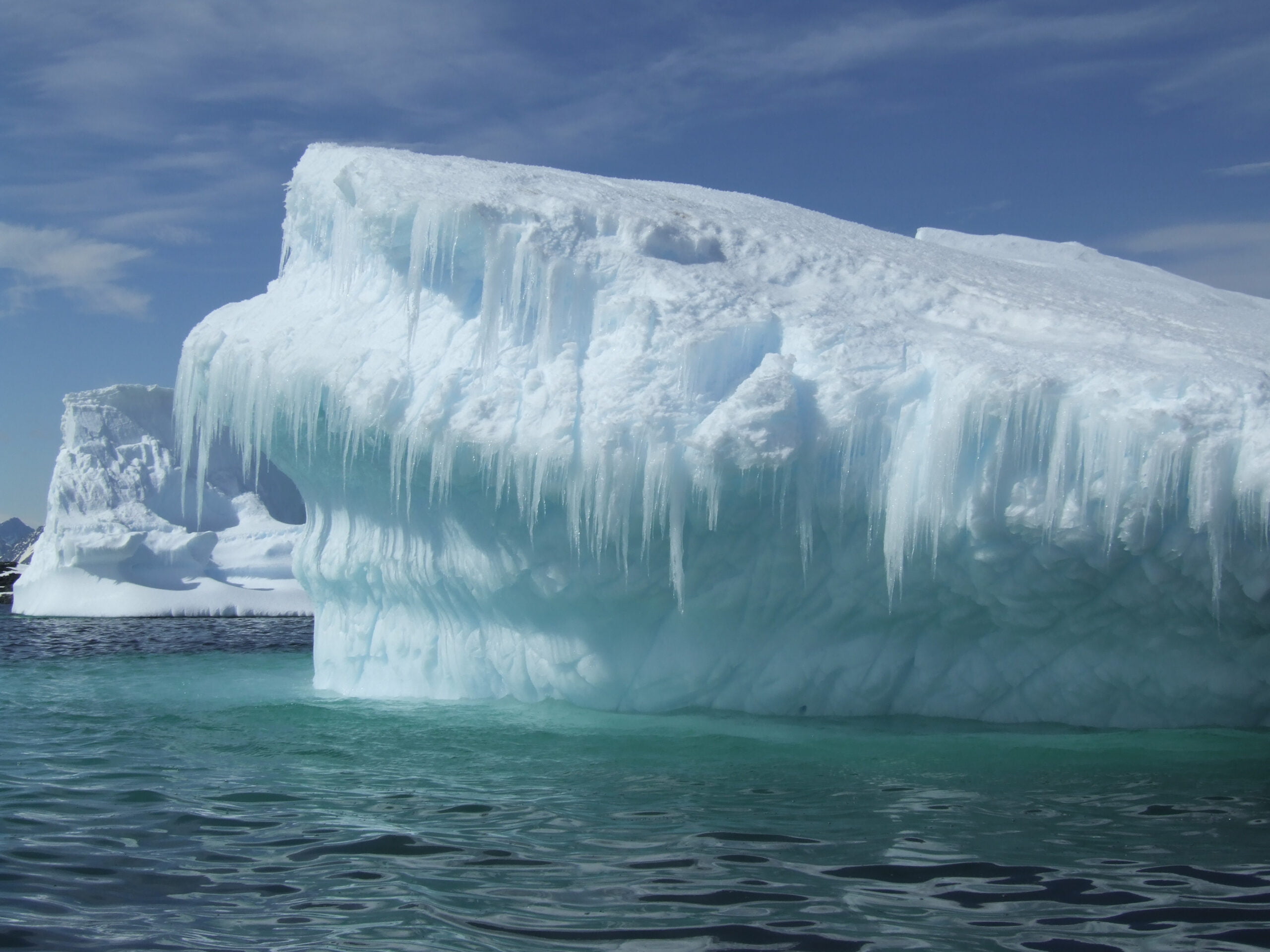
Really big bergs will also get a formal name made of numbers and letters so that we can keep track of it – like the megaberg ‘A23a’, for example.
Icebergs also come in different shapes. Tabular icebergs have steep sides and a flat top, and still look like a part of the ice shelf they calved from. This is what the A23a iceberg looks like.
A23a is HUGE – 3,900 square kilometres!
Non-tabular icebergs are all sorts of different shapes and sizes – with spires and domes, for example. Some icebergs are also a beautiful blue colour.
This is because the bond between oxygen and hydrogen in the water absorbs light at the red end of the spectrum, and reflects the striking blue colours we see.
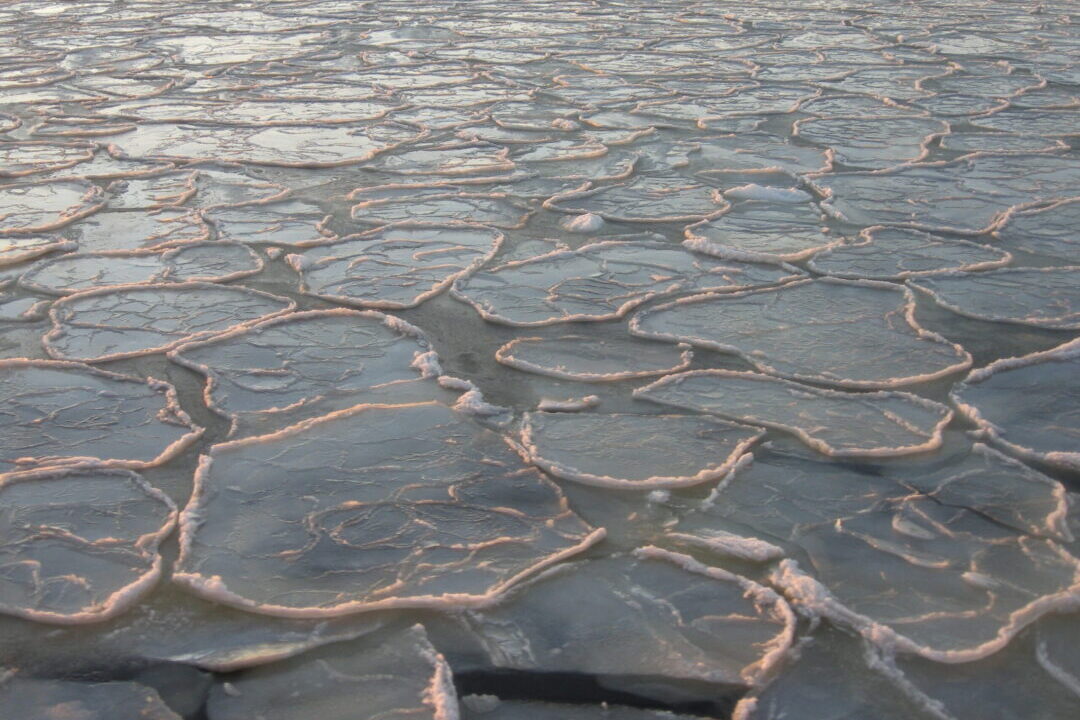
Pancake ice in the Bellingshausen Sea. Yum.
Did someone say pancakes?
Sea ice is made when the ocean temperature drops below -1.8°C. It forms each winter before melting away again in the summer. First, the surface waters turn to slush, before solidifying into ice, usually a few metres thick.
Sea ice is different from ice shelves, which are extensions of glaciers, floating on the ocean surface. Ice shelves can be hundreds of metres thick and are made up of freshwater.
There are lots of different types of sea ice that we spot around Antarctica.
Near the coast, sea ice is referred to as ‘fast ice’. Further out to sea, where it can be moved by ocean currents and wind, it is called ‘drift ice’. Large areas of drift ice are called ‘pack ice’.
There’s also a type of sea ice called pancake ice because – you guessed it – it looks like pancakes! These are slushy, circular discs of ice that form as the ocean begins to freeze.
Scenic views everywhere you look
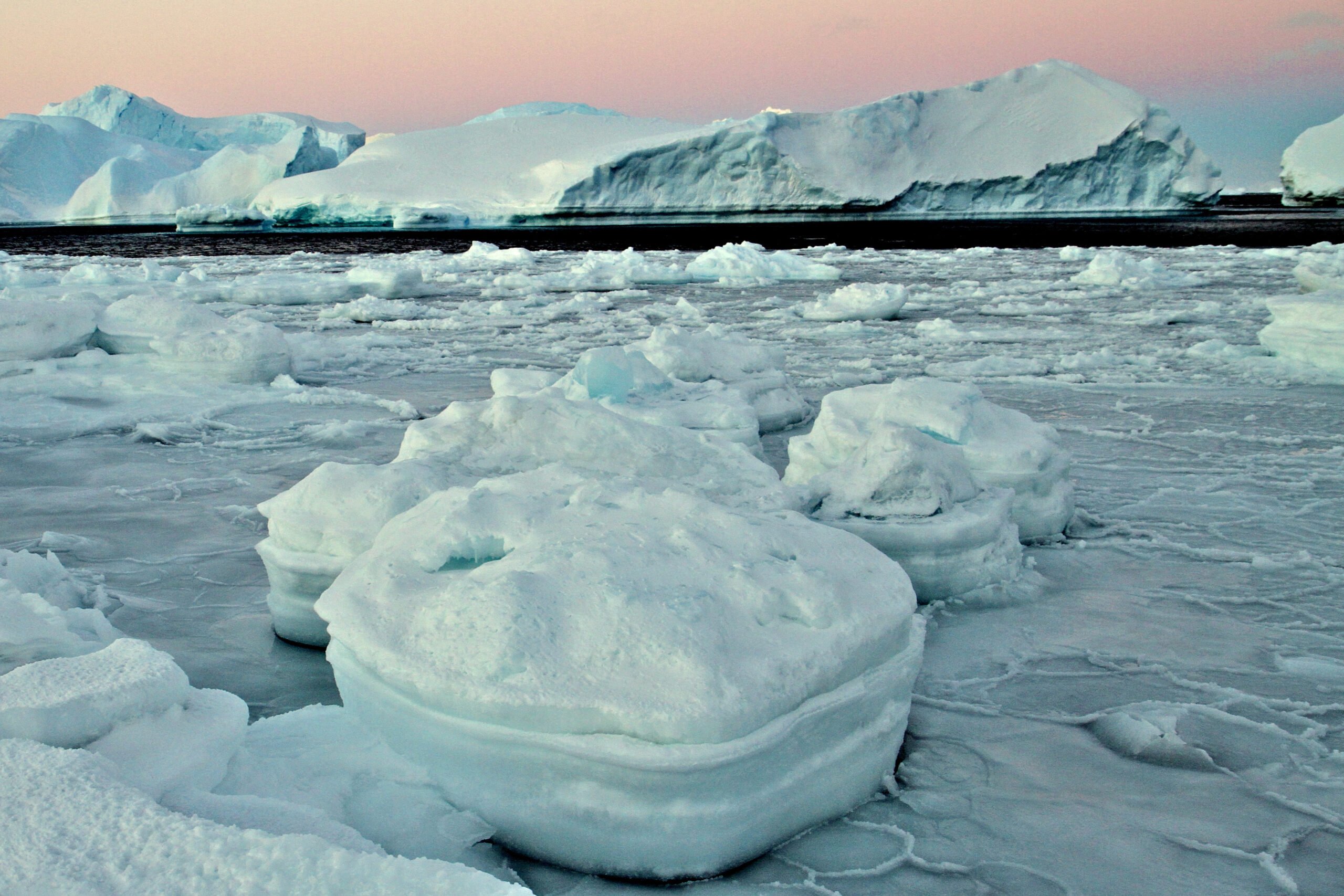
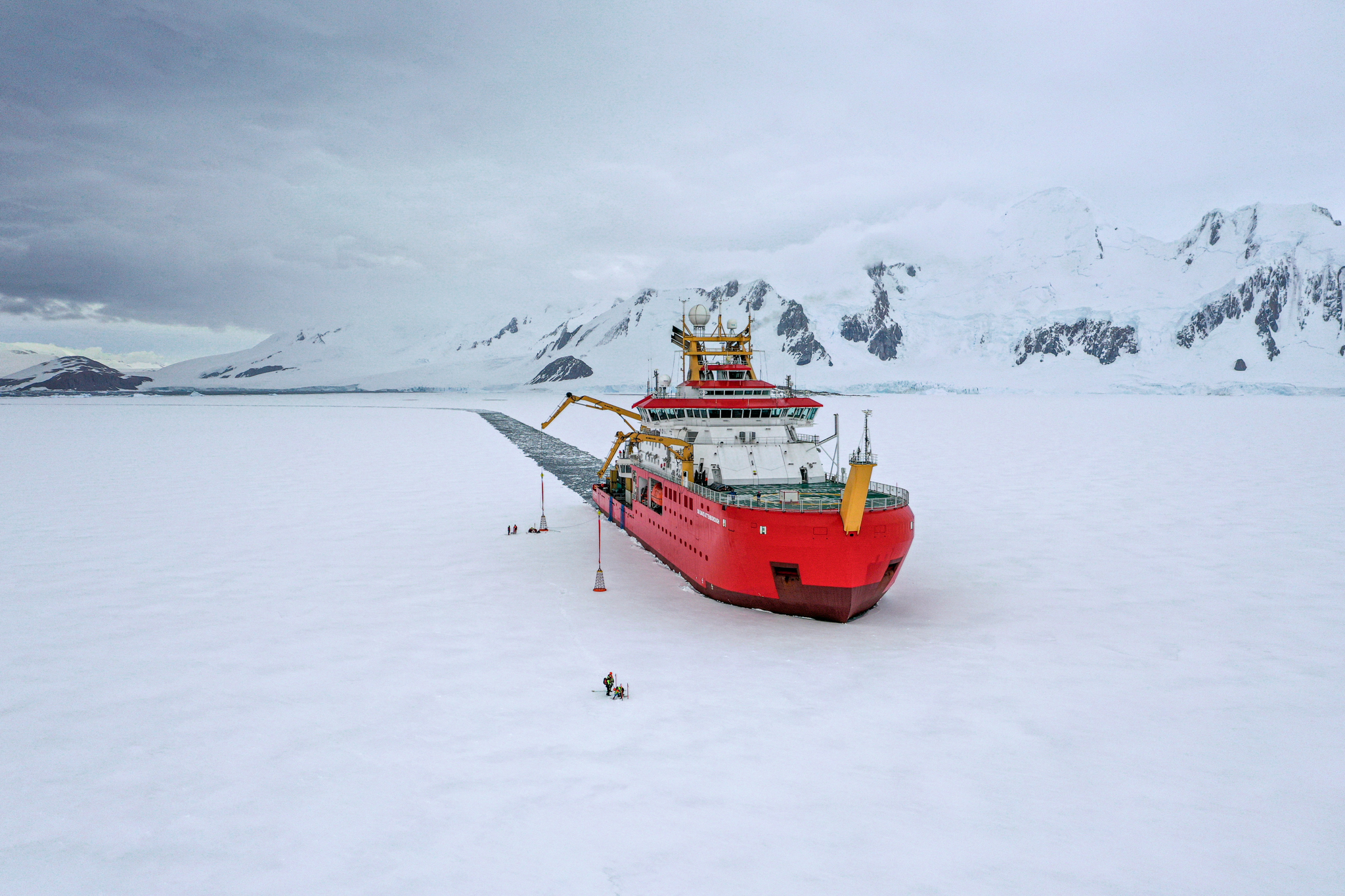 Jamie Anderson
Jamie Anderson The ship has a hardened hull to break through ice!
Around Antarctica, the area covered by sea ice expands from a low of around 3 million km2 in February to a whopping 20 million km2 in October.
How does the SDA break through sea ice? Well, it rises up on to the ice and uses its weight to break through! The ship can break through one metre thick ice at a speed of three knots (5.6km/h).
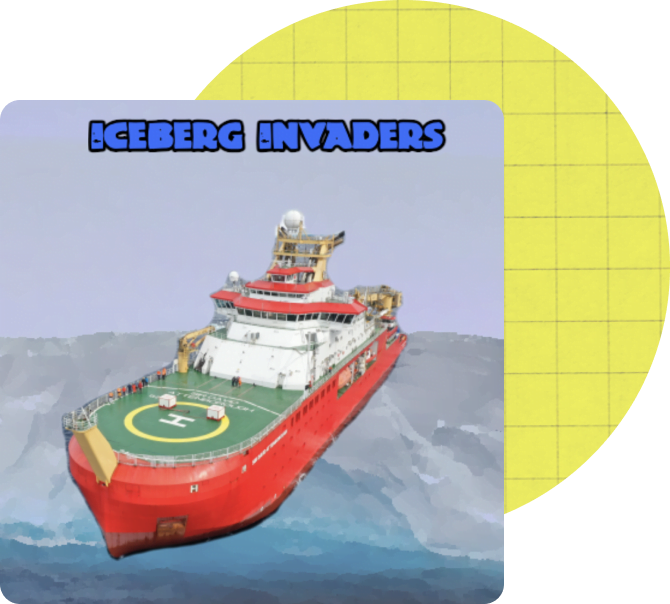
Play our game Iceberg Invaders
Have you got what it takes to sail Antarctica’s frozen seas? Keep RRS Sir David Attenborough on course, avoiding icebergs and doing science in our Space Invaders-style game.
Sea ice science
In 2023, we saw record-breaking lows of Antarctic sea ice. It re-grew over the winter – but very slowly – and when the sea ice should have been approaching its maximum winter coverage, there was an area of ice missing that was bigger than Algeria – the world’s 10th largest country.
Is it caused by climate change? There are so many things that affect sea ice in the Antarctic that it’s hard to say, but the sheer scale of 2023’s sea ice low suggests something unusual is going on.
Why is sea ice important?
- The frozen continent acts as the Earth’s fridge – its bright, white surface reflects the sun’s energy and helps keep the planet cool.
- When sea ice forms it acts as an engine for ocean currents and influences weather patterns.
- Floating ice acts as a buffer to protect ice sheets from destructive waves – helping to slow down sea level rise.
- It’s an important habitat for marine life – for example, emperor penguins breed on sea ice.
Want to learn more about sea ice? Check out our handy guide…


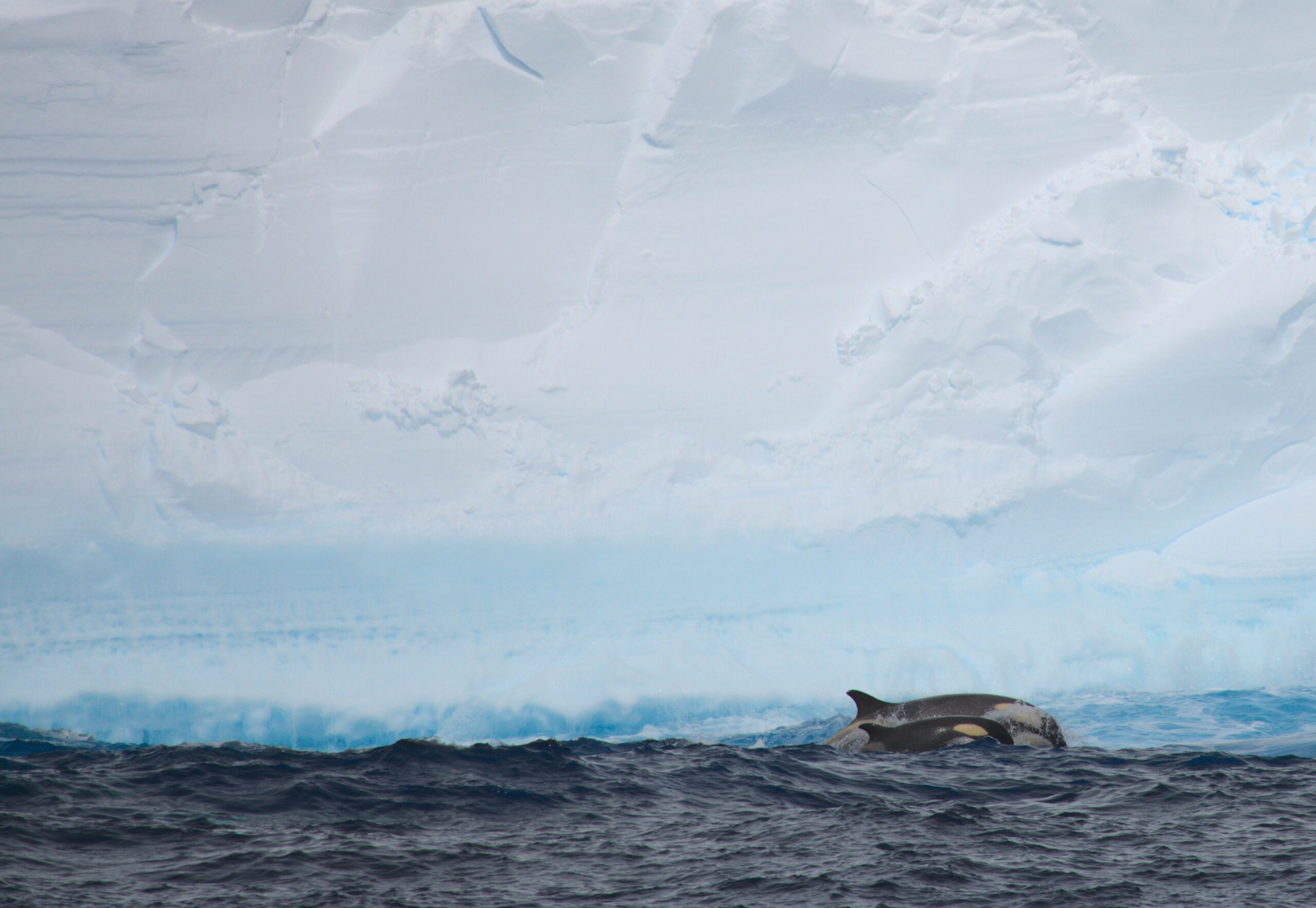 Tarkan Bilge
Tarkan Bilge Sea ice and wildlife
When the sea ice melts in the summer, it releases millions of tiny plants and animals into the water. This kickstarts an explosion of life that stretches across the Southern Ocean.
Last year, as part of a project called BIOPOLE, scientists on board RRS Sir David Attenborough collected data from the edge of the melting sea ice to learn more about how this process drives global cycles of carbon and nutrients.
Gentoo penguins on an iceberg
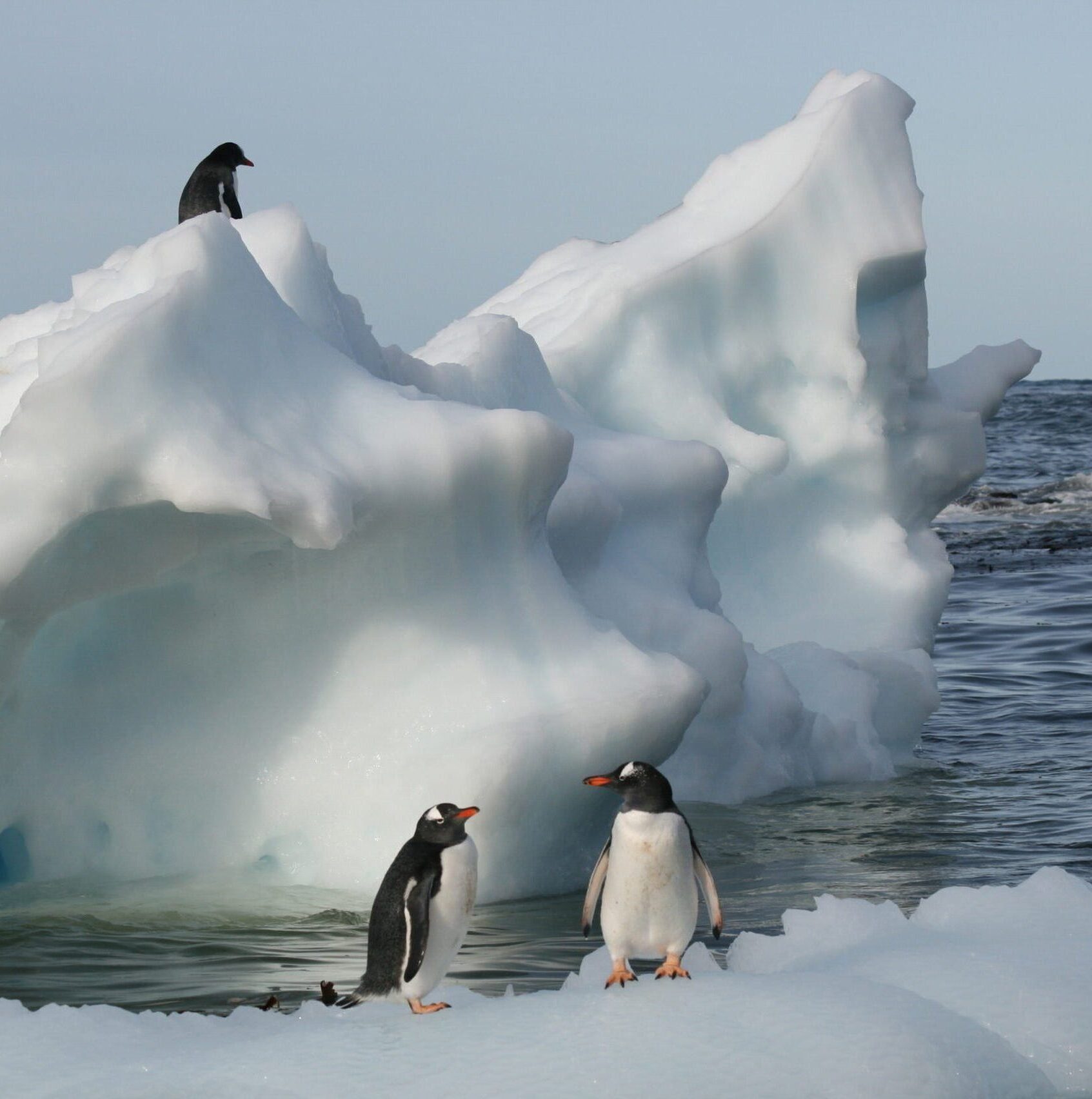
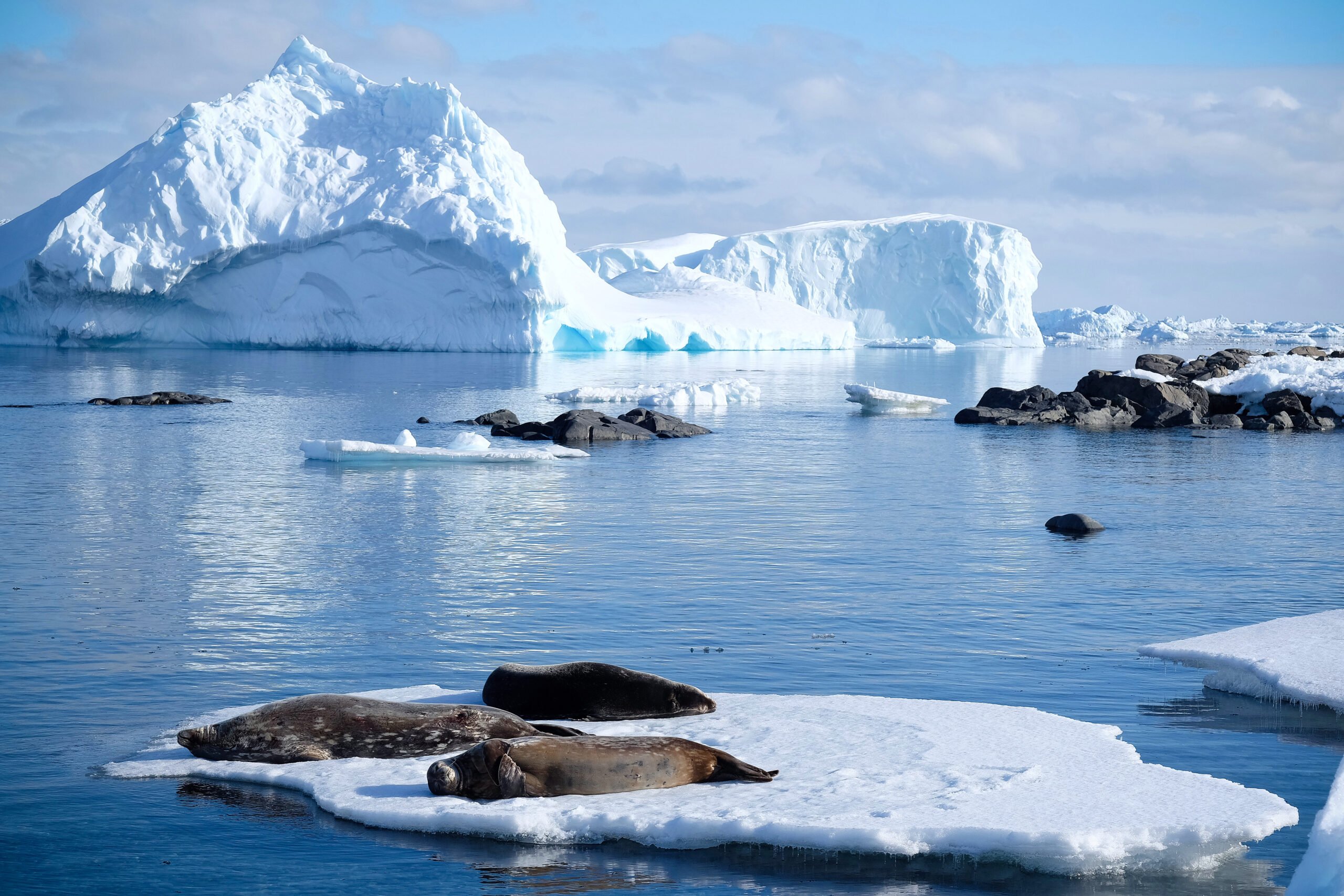
Crabeater seals!
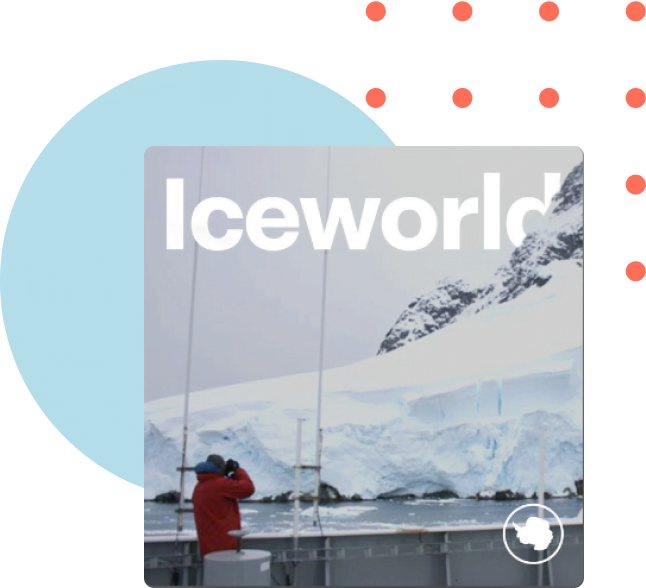
Crossing the Southern Ocean
Want to hear more about crossing this treacherous bit of ocean? Listen to our Crossing the Southern Ocean podcast episode.
